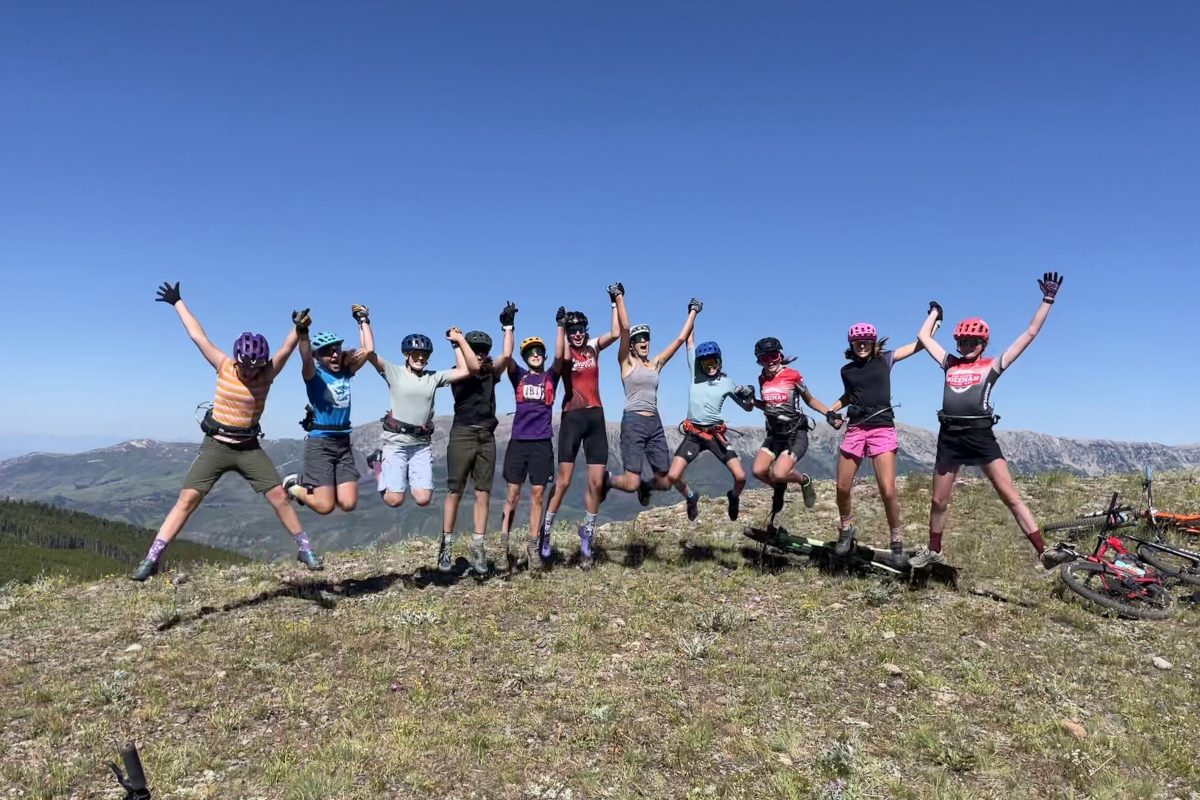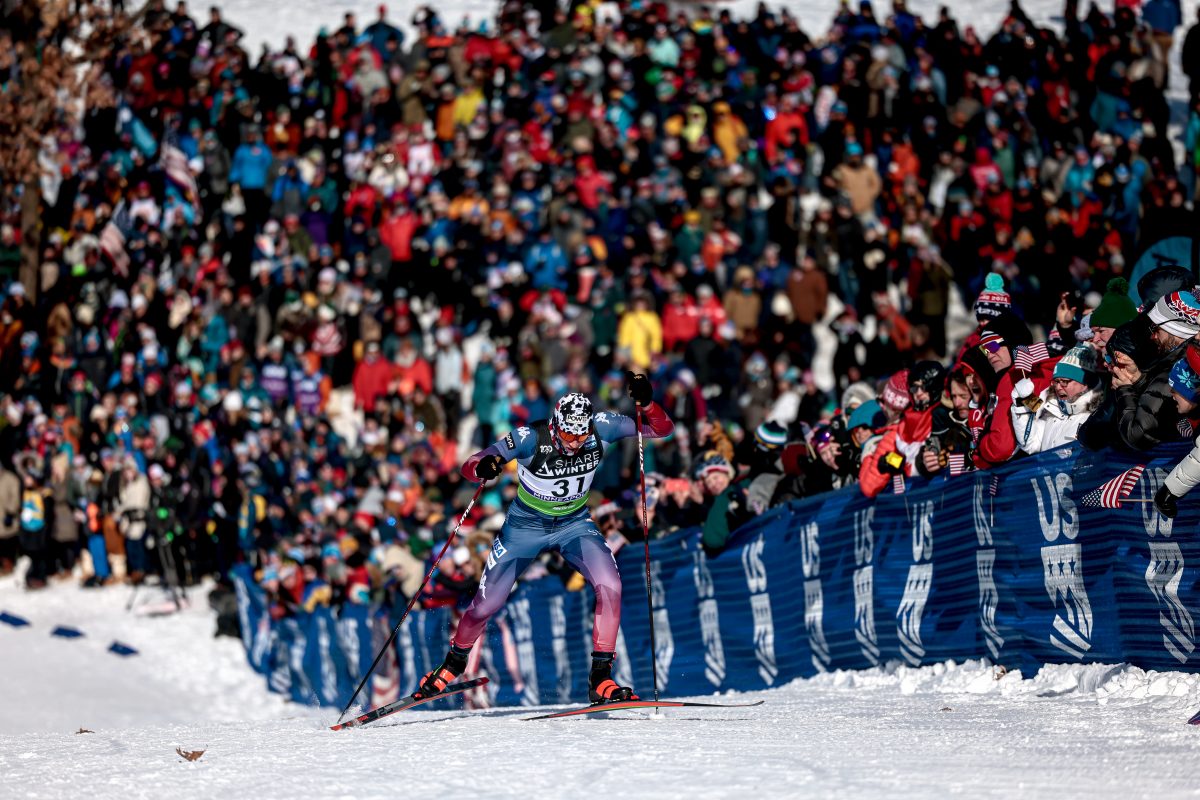SKI BASE PREPARATION FOR THE 2009 AMERICAN BIRKEBEINER
Swix Racing Service Director, Kevin Sweeney
Proper base preparation is perhaps one of the best ways to insure you have great kick and glide for the 55km American Birkebeiner. Conditions appear to be moderately abrasive for this year’s race. Follow these simple steps and your skis will be ready for race wax application. Swix makes it easy for you to have great skis!
The first step is to clean the base glide zones from old wax, oils and dirt. This is done best by using the “hot scrape method”. Take Swix BP99, which requires a very low iron temperature of 110C, and melt this onto the base. Iron in with 2-3 passes down the length of the ski with each pass taking approximately 7-10 seconds. While wax is still molten, use a stiff (3mm) plastic Swix wax scraper (T0823D) and scrape wax off the base. You can usually see the dirt and particles in this scraped up wax. Continue to do this 2 or 3 times until you can not see any more dirt coming up. Let skis cool for 10 minutes, and then brush out the base using the Swix Fine Steel Brush (T1088B pro oval) or (T0192NB rectangular). Brush 7-10 strokes. You can feel when the brush becomes free and no more wax is left in the base structure. Keep brushes clean by using your shop vacuum on the bristles. The extra fine filaments of the Swix steel brushes are incomparable in performance. They are extremely durable and do not break down like an old nylon brush or too soft of a brush such as copper or soft bronze. You are able to clean the wax out of the structure and open up the pores of the base that may have been inadvertently burned or sealed by using too hot of an iron or lingering in one spot too long.
NEW! If you are an avid user of our Cera Nova Category 1 waxes: HF, HFBW, FC Cera F powders, turbo solids and liquids, you may be interested in our new I0084 Cleaner for Fluor Glide Wax & Base Conditioner. Swix has found that fluor bonding has left an impenetrable wax layer that prevents the “hot scrape cleaning method” to be 100% effective. The new I0084 liquid separates the fluor molecules thus allowing you to wipe clean the base surface. This is done without damaging the base in a chemical or mechanical manner. The base is now ready to be cleaned as above (hot scrape) and/or brushed and ready for base wax saturation. Swix is experiencing much use of the I0084 with the advent of our next generation Cera F waxes with increased durability, namely the HF Black Wolf line, FC78 SuperCera and the new FC8x.
Now that bases are clean, it is time to saturate the pores of the glide zones with wax. Our goal here is to fill the pores with a wax that will provide excellent bonding to our race layers and also to condition the hardness of the base to match that of the snow conditions. If base hardness equals snow hardness (ability to keep the snow crystals from digging into the base and wax), we will have an environment where there is little friction occurring thus enhancing glide. What wax we put on at this point is very important. In most cases, we want a “hard” wax for this. In very cold temperatures it is common to use Swix CH4. In warmer conditions, Swix has developed the next generation base preparation wax, Swix MB77. This wax is to be used as a base preparation wax in the most common temperatures people frequently ski. MB77 is a fantastic base preparation wax because it contains a moly additive whose main function is to repel dirt and act as a dry lubricant reducing friction in dirty and drier conditions. This is the same moly additive found in our extremely versatile 100% NEW! Cera FC7BS and FC10BS Turbo waxes. The MB77 is unique in that it also contains a significant amount of fluor which does three things. One, it is extremely hydrophobic (repels water). Two, the fluor molecules provide a great bonding base for the high or 100% race layer fluors to be added as semi final or final overlays. (When heat is applied, these fluor molecules bond to each other proving a very durable topcoat or overlayer). Three, the fluor makes the base wax very durable.
The numbers “77” in MB77 represent its hardness scale in the Swix glide wax line up with 4’s and 6’s being cold and 8, 10’s being warm waxes. Due to the moly’s ability to provide lubrication in drier snow, we are able to run the MB77 when temps call for 6’s and also to have success at higher elevations we find typical of the Rockies etc. Give the glide base a good saturation of Swix MB77. Let cool, scrape and brush out with the NEW! long bristled Steel Brush (T1790 pro oval / T179 rectangular).
Structure of the ski base is now our next consideration. In nearly all cases except extremely cold conditions, you should have structure in the ski base. Refer to the following points and apply structure with the legendary simple Swix T401 Hand “Riller” structure tool. Visit www.swixracing.us and view the 2009 Nordic Racing Ski Preparation Manual download for more details.
Practical guidelines when setting structure with hand held tools
• Use of the different imprint blades will vary with the underlying stone grind. If the base has a fine structure it can be taken to “medium” by using the coarse imprint blade. In this way you will be able to make a fine stone grind fit “medium” conditions. However, it is not possible to make a coarse stone grind ‘fine’ with a ‘fine’ blade.
• In skating, a medium/coarse or coarse structure is rarely used due to varying conditions in a skating slope and the negative effect this will give on “feeling” (which has to do with the resistance in pushing the ski forward). In skating, a fine or medium structure is preferred as the standard; these structures will then be modified with the use of the structure/imprint tools “on top of” the underlying stone grind. Be aware of the amount of pressure when applying the hand made structure. In skating it is most important to apply light pressure on the front half of the ski. A harder pressure will be applied from the binding and backwards. This has shown to give an optimal mix of “good glide” and “free feel.”
• For classic skis, use even pressure, but preferably lighter pressure on the front part.
• Manually produced structure should be set after waxing, and after application of Cera F and brushing. After setting the structure, brush once more with the Blue Nylon brush.
• Always apply manual structures on race day since the intended effect can be reduced over time.
• If two or more imprint blades are used in combination, always start by using the coarser blade.
• In more humid / wet conditions, it is normal to use more pressure and to make 2-3 passes with the imprint device to facilitate better drainage of moisture.
• Never clean your structuring blades (or steels) with a metal brush. Use a soft toothbrush.
• Use the following chart to make decisions on which imprint structure to use:
For your kick zones, clean with Swix wax remover. Scrub clean with Fibertex, wipe clean and let air dry. Sand the kick zone (60-70cm from heel forward) with #80-#100 sandpaper in a manner parallel to the base (not across). Depending upon conditions & wax recommendation apply base wax VG35 or new KB020 after all glide waxing has been completed!
Based on the forecast, everyone can go through this base preparation process several days before heading to the Birkie. Keep the MB77 on the base until you are ready to apply final race layers and structure.
QUICK WAX RECOMMENDATION
APPLICATION
You will have to decide between two options for kick based on the developing weather: hardwax or a klister & hard-
wax combination. See details below. Swix will be at the Expo for waxing advice, tips & clinics.
KICK ZONE PREPARATION
Remove old kick wax and clean base with Swix wax remover and Swix fiberlene. Let base dry. Use 80-100 grit sandpaper and sand kick zone in a manner parallel to the ski base, not cross hatching! The Swix T0011 Cork & Sandpaper combi tool works great for this! A typical adult hardwax kick zone is 60-75cm from the heel forward. A typical adult klister kick zone is 60-65cm in length. You will now have to choose your kick wax binder from the 2 options below.
BASE KICK WAX-hardwax binder (if surface is mainly new snow)
Apply a generous layer of Swix VG35 Base Wax. Iron in @ 110C. Let cool. Apply two layers of Swix V40 Blue Extra. Cork very smooth between each layer. Let cool. You are now ready to apply final race hardwax wax (see below).
BASE KICK WAX-klister binder (if no new snow or very little new snow)
Apply a layer Swix KR20 BaseKlister. Iron in smooth, 110C. Or, try our new KB020 base klister spray! Let cool until hard (set outside). Apply one layer of KR40 Kyrstal Klister. Let cool until hard (set outside). Apply two thin layers of Swix VR40. Cork very smooth between each layer. Be gentle. This ski is ready to race on. Waves 6-9 use VR45.
RACE KICK WAX (for hardwax)
Waves Elite & 1-5: Apply 6-8 thin layers of Swix VR40. Waves 6-9: Apply 6-8 thin layers of Swix VR40/45 HardWax. Alternate layers and end with VR40.Cork smooth after each layer. Do not “drag” all the wax down or up the kick zone. Cork in both directions: pulling up from the heel & down from the high point. Build the wax in the middle of the kick zone which is directly under the ball of your foot in a pyramid fashion.
COMPLETE WAX RECOMMENDATION
You can download Swix’s complete wax report and recommendation by clicking the following link;




